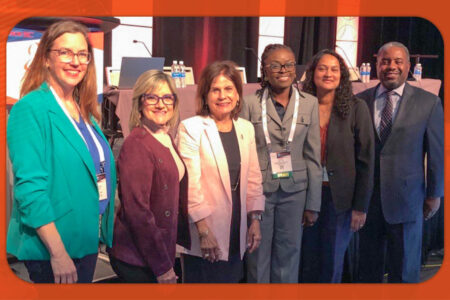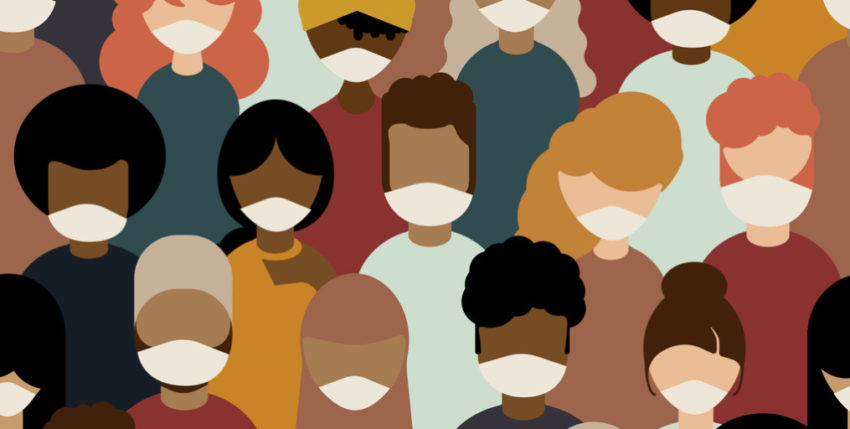
Share On Social!
Health equity is where everyone has a fair and just opportunity to live their healthiest life possible.
But health inequity remains.
Now the COVID-19 pandemic is worsening historical inequities, and disproportionately affecting and killing Latinos and other people of color.
So what can we do?
We need both immediate focus to ease the coronavirus pandemic and its impact on Latinos and people of color, as well as long-term strides to address underlying inequities that are aggravated during this time.
It won’t be easy, or fast. But here’s few ways to push for health equity.
1. Understand the Need for Heath Equity During COVID-19 and After
Where you live matters for your health.
Even before COVID-19, inequitable city planning, historic discriminatory practices like redlining, and other inequities created racial/ethnic wealth gaps in neighborhoods. These areas lack health-promoting assets like healthcare and jobs.
 Latino neighborhoods, for example, struggle with equitable access to:
Latino neighborhoods, for example, struggle with equitable access to:
- healthy food
- safe places for physical activity
- affordable housing and transit
- social support
- healthy school environments
Now COVID-19 is exacerbating those very health inequities.
Latinos are essential workers on the front lines, in health, retail, and food jobs. Fewer Latinos can work from home. They are facing colossal job loss. They don’t have access to testing and care.
And it’s worse for Latino immigrants.
“Evidence from previous recessions show families of young children with low incomes, communities of color, and immigrants are particularly vulnerable to economic downturns resulting in increased economic hardship over longer periods of time even after the economy as a whole recovers,” according to Children’s Healthwatch.
“This reality, when compounded by pre-existing wealth disparities by race, ethnicity, and gender, will exacerbate inequity and increase hardship.”
2. Increase SNAP Benefits by 15%
Let’s start with some good food news.
The Families First Coronavirus Response Act creates the Pandemic Electronic Benefit Transfer program. Households can get an EBT card with the value of the free school breakfast and lunch reimbursement rates for the days that schools are closed.
Many say this isn’t enough for families, especially those who are food insecure. Latino and black households are more likely to suffer food insecurity (16.2% and 21.2%, respectively) than the national average (11.1%).
People relying on SNAP food aid can’t stock up on food or buy online. The program is supporting an increasing number of Americans amid coronavirus.
In response, the government should increase the monthly minimum SNAP allotment by 15% [from $16 to $30] for all participants “to adequately meet the nutritional needs of families with low-incomes and reduce food insecurity,” according to Children’s Healthwatch.
Some federal leaders agree.
“These unprecedented circumstances are straining the nation’s food banks and many Americans have turned to government benefits such as SNAP to put food on the table for their families,” lawmakers wrote in an April 16, 2020, letter to Congressional leadership.
Other potential options to address food insecurity:
- Suspend all SNAP administrative rules that could terminate or weaken benefits, according to Children’s Healthwatch.
- Two Virginia lawmakers are urging USDA to allow the state to try a new pilot program to let SNAP recipients use their benefits to buy groceries online amid the COVID-19 pandemic.
- Transportation vouchers could assist those in so-called food deserts.
“Seventy percent of Fresh EBT survey respondents who have lost work said they didn’t apply for unemployment insurance because they didn’t think they were eligible,” according to Salon.com. “Outreach through every medium available, in multiple languages, is a critical component to ensuring families know and can access these resources.”
3. Address Housing, Eviction Issues
Affordable housing was a crisis even before COVID-19.
In fact, 56.9% of Latinos are “housing cost burdened.” They spend about a third of their income on housing.
Now the pandemic is threatening to increase homelessness and evictions.
The latest $500 billion coronavirus relief package includes “$60 billion set-aside for small banks and an alternative network of community development banks that focus on development in urban neighborhoods and rural areas ignored by many lenders,” Time reports.
But the U.S. still needs a national moratorium on evictions and foreclosures for all renters and homeowners, says Children’s Healthwatch.
“Congress should implement a uniform policy that assures renters will not lose their homes during a pandemic where our collective health depends on each of us staying home,” wrote the National Low Income Housing Coalition (NLIHC). “Although tenants will be responsible for paying back unpaid rent, the law should prohibit rent arrears accumulated during the period covered by the moratorium from forming the basis of an eviction.
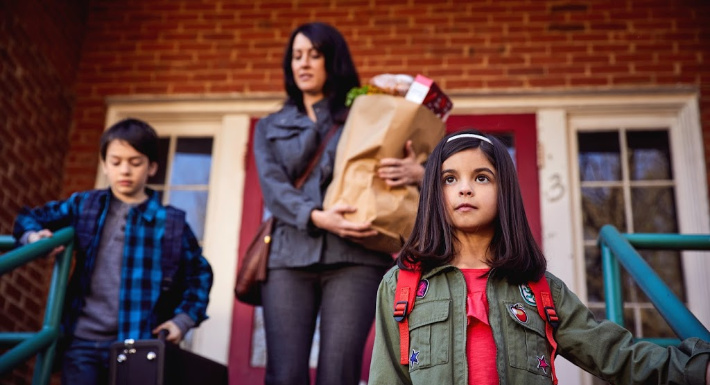 The NLIHC argues a moratorium on evictions isn’t enough.
The NLIHC argues a moratorium on evictions isn’t enough.
Federal leaders could provide billions in rental assistance to “avoid creating a financial cliff for renters will fall off of when eviction moratoria are lifted and back-rent is owed, and to ensure the continued viability of our country’s essential affordable housing infrastructure.”
Short-term actions include:
- Moratorium on sweeps of homeless encampments.
- Emergency funds for public housing and other HUD housing providers.
- Access to legal services and housing counseling.
Long-term actions include:
- Increase investments in the national Housing Trust Fund.
- Public housing capital funds.
- Expand rental assistance.
- Prevent evictions by creating a new emergency assistance fund.
- Expand and reform the Low Income Housing Tax Credit.
“Congress should include resources to address the underlying causes of homelessness that also increase the risk of future outbreaks: the severe shortage of rental homes affordable and available to America’s lowest-income households,” NLIHC wrote.
4. Add, Strengthen Paid Leave Policies
Only 25% of Latinos have paid family leave through an employer.
Lack of paid leave and other economic support contributes to health and economic disparities among Latinos and low-income families.
Amid the coronavirus pandemic, the CARES Act provides for paid sick, family, and medical leave.
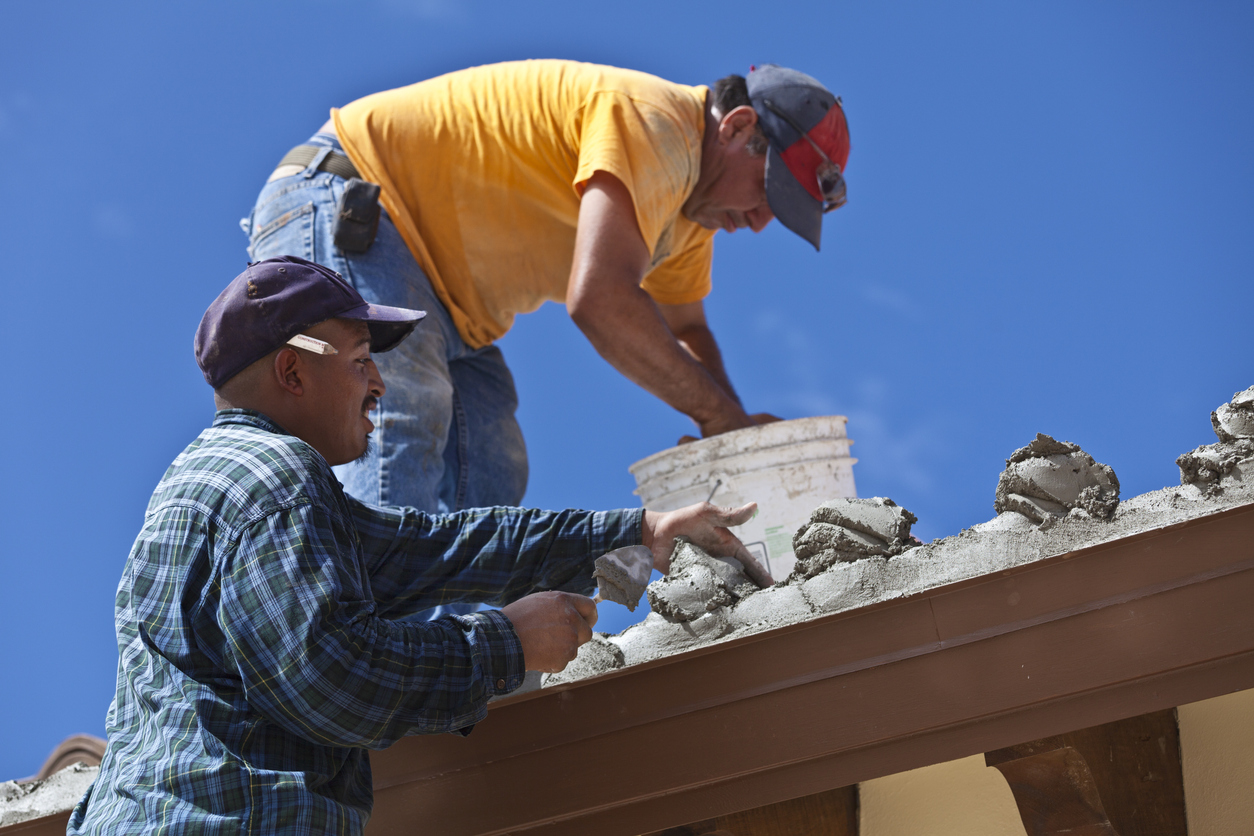 “However, these provisions do not apply to employers with more than 500 employees, while small businesses with fewer than 50 employees can also ask for an exemption,” according to the Pandemic of Inequality by the Levy Institute. “As a result, only 25 percent of private sector employees are covered.”
“However, these provisions do not apply to employers with more than 500 employees, while small businesses with fewer than 50 employees can also ask for an exemption,” according to the Pandemic of Inequality by the Levy Institute. “As a result, only 25 percent of private sector employees are covered.”
That’s why the United States should “establish and implement paid sick leave for all workers, in line with paid sick leave laws already implemented in states such as California and Massachusetts,” according to Children’s Healthwatch.
“The more employees that have access to paid leave, the less severe will be the direct impact on the macro-economy,” according to the Pandemic of Inequality by the Levy Institute. “Employees forced to take unpaid leave, as is now common, will consume less and so reduce consumption and overall demand.”
“Access to paid leave will also decrease the rate of spread, as it will keep individuals from going to work despite being ill. Therefore, we need to guarantee paid sick leave for everyone (part-time and gig-economy included), which should be subsidized by the government in the case of small businesses.”
5. Expand Health Care Coverage
19% of Latinos are uninsured.
This is the worst coverage rate among racial/ethnic groups.
Latinos also suffer a higher rate of certain underlying conditions—certain cancers, heart disease, as well as obesity and diabetes. These heighten the risk for severe coronavirus infection.
This means we need to provide healthcare coverage for services that address underlying health conditions, including nutrition, mental health care, and safe options for physical activity.
“Chronic disease makes patients more susceptible to the worst impacts of COVID-19, and we must address the root causes of these conditions,” said Sophia L.Thomas of the American Association of Nurse Practitioners in a statement. “Access to care will help ensure patients’ chronic conditions are monitored and appropriately tracked by a health care professional.”
 Healthcare is a huge need for families, according to Children’s Healthwatch.
Healthcare is a huge need for families, according to Children’s Healthwatch.
“[We need to expand] access to affordable and adequate health insurance options so all families, including children and adults, regardless of immigration status, are able to access medical care, prescriptions, and vaccines when they need them without having to sacrifice other basic needs or accrue medical debt,” they wrote.
Also, in the short term, the pandemic is likely to cause a shortage of hospital beds, ICU beds, and ventilators, according to researchers.
Providers will have to prioritize resources.
The latest $500 billion coronavirus relief package has $100 billion for hospitals and a nationwide testing program, Time reports.
This is extremely important for Latino populations.
“All individuals should have ready access to coronavirus testing and treatment, including the uninsured and underinsured, regardless of immigration status, and including those with DACA and TPS,” according to UnidosUS. “Congress should provide that treatment of COVID-19 is a mandatory benefit for all Medicaid beneficiaries and that COVID-19 and associated health problems must also be considered an ’emergency medical condition’ for the purposes of emergency Medicaid.”
In the long term, we need proper funding for an effective health infrastructure, according to a report by the National Association for the Advancement of Colored People (NAACP).
This includes health departments and the U.S. Public Health Service, and health professional shortage areas.
“At this point, because of the structure of the US healthcare system, we face the paradox of people losing access to healthcare (mostly because they lose their jobs) at a time when they—but also the society and economy as a whole—need it most,” according to the Pandemic of Inequality by the Levy Institute. “In order to mitigate the impact and duration of the COVID shock, we need to have broad, open access to testing and treatment for the coronavirus, regardless of immigration and insurance status, that is cost-free to patients.”
6. Protect, Support Struggling Workers
On April 24, 2020, President Donald Trump was set to sign into law a nearly $500 billion injection of coronavirus relief spending.
This would include new relief to employers and hospitals.
“Anchoring the bill is the Trump administration’s $250 billion funding request to replenish a fund to help small- and medium-size businesses with payroll, rent and other expenses. The payroll program provides forgivable loans so businesses can continue paying workers while forced to stay closed for social distancing and stay-at-home orders,” according to Time. “There’s also $60 billion for small-business loans and grants delivered through the Small Business Administration’s existing disaster aid program.”
 Latino workers face a special need for relief.
Latino workers face a special need for relief.
Less than 30% of all U.S. workers can work from home.
Only 16.2% of Latino Americans can work from home—the far lowest percentage among African Americans (19.7%), Whites (30%), and Asians (37%), says the Economic Policy Institute.
The rest are our essential workers. They have no option for telework—first responders, grocery or food workers, or migrant farmworkers in rural areas—and risk virus exposure for a paycheck.
Latinos are overrepresented in these fields.
They need equitable protection, like flexible work schedules, paid leave, and protective gear, writes the team at ChangeLab Solutions.
But what about those who’ve lost jobs?
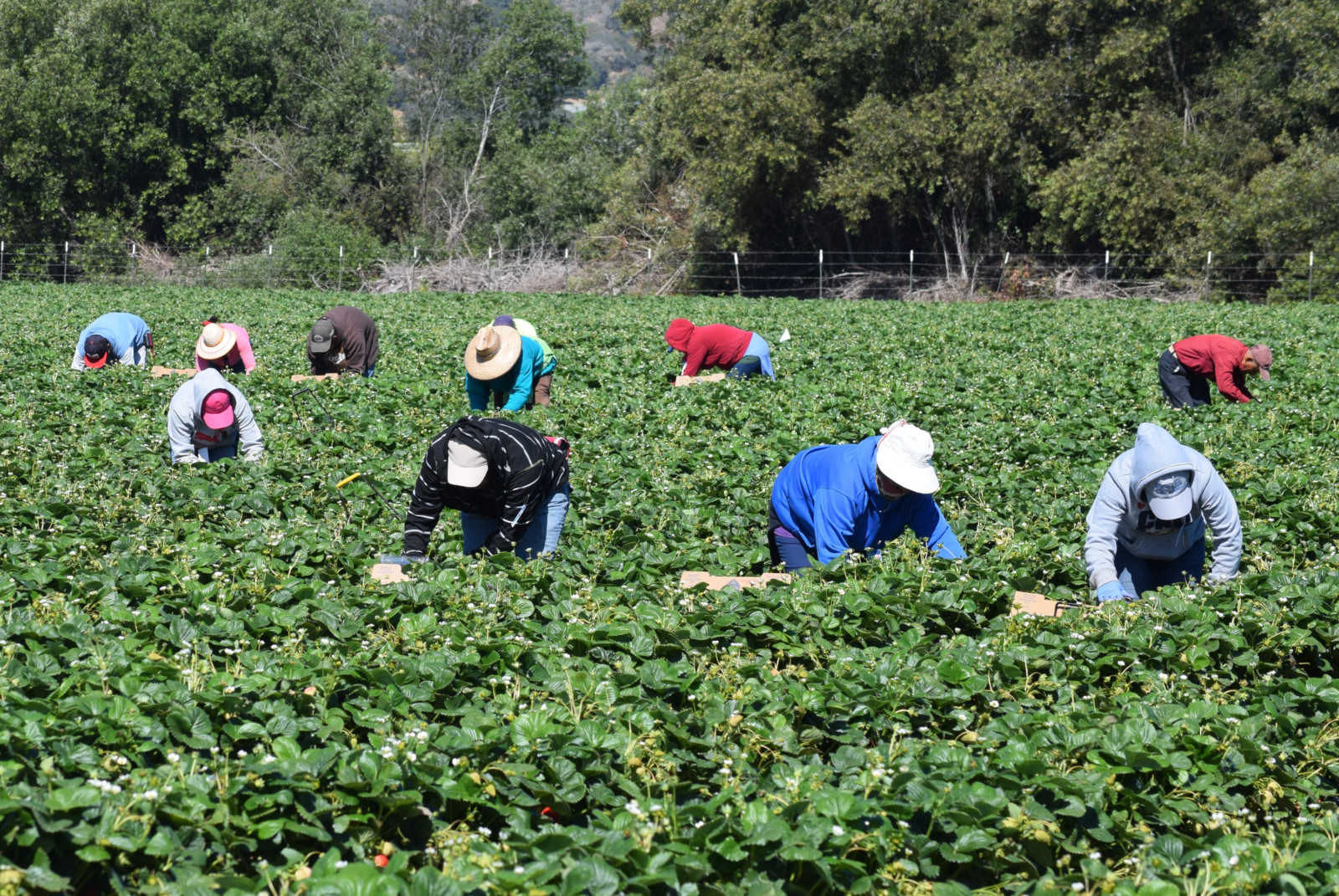 26 million people have filed jobless claims in the past five weeks, NBC News reports.
26 million people have filed jobless claims in the past five weeks, NBC News reports.
Latinos are losing jobs at higher rates.
Nearly 65% of Latino respondents reported losing jobs, experiencing monetary struggles, or know someone who has, according to a recent poll by SOMOS Community Care and Latino Decisions.
“All workers, especially those risking their health and lives in essential jobs, deserve access to unemployment benefits,” according to UnidosUS.
Children’s Healthwatch recommends expanding unemployment benefits:
- Extend paid sick leave and medical leave provisions to cover all workers, including low wage workers and immigrants currently excluded from policies enacted on the federal level, and increasing wage replacement amounts within the programs to ensure families are able to make ends meet.
- Create Emergency Assistance Grants as enacted during the Great Recession through the Temporary Assistance for Needy Families (TANF) program. This would enable states, territories, and tribes to address unmet emergency needs (such as cash assistance to extremely low-income families).
“As Latinos have been particularly instrumental as the engine of the U.S. economy, they will play a major role in building back that economy,” writes Rogelio Sáenz, a Salud Hero and demographer at UT San Antonio.
“However, as is the case with many other groups around the country, Latinos will need major assistance to recover from the maladies of the Coronavirus pandemic.”
7. Support Disadvantaged Families
Latinos will need cash to meet their basic needs, wrote UnidosUS.
Latino workers are disproportionately represented in jobs with irregular work schedules, last-minute shift changes, and volatile work hours. Less than 30% of Latino workers are eligible for and able to afford taking unpaid family or sick leave, according to a Salud America! research review.
But the new $500 billion coronavirus relief act doesn’t do enough for Latinos, said Janet Murguía, head of UnidosUS.
Legislative efforts have also excluded large portions of the population from economic relief, which will sadly undermine our nation’s recovery,” Murguía said in a statement. “Across the board, Latinos—including citizens, legal residents, mixed-status families, and the undocumented—have been purposefully excluded from programs or left out due to systemic barriers that prevent them from accessing even the programs they purportedly qualify for. Like all Americans, Latinos need and deserve equitable access to resources that help them meet their basic needs during this emergency.”
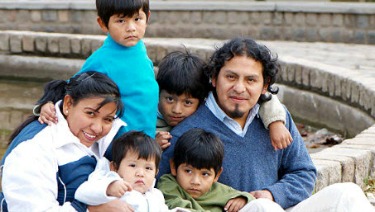 Cash transfers, Children’s Healthwatch suggests, should go monthly to families in that most need who:
Cash transfers, Children’s Healthwatch suggests, should go monthly to families in that most need who:
- are at the lowest incomes regardless of immigration status or 2019 tax filing;
- have children; and/or
- lost jobs or income as a result of this pandemic to use 2019 earnings when filing 2020 taxes to provide additional support to families in the future.
Also, how can families keep working without adequate child care?
Children’s Healthwatch suggests:
- Ensure essential employees can access child care and cover additional expenses and resources required for child care providers.
- Support the child care workforce who will financially struggle due to closures.
- Keep all providers afloat during closures to ensure all families maintain access to child care when shelter-in-place orders lift and parents return to work or school.
Public health experts worry about rises in domestic violence and child abuse during the coronavirus lockdown.
Go here for more details on addressing child abuse.
“It is incumbent upon all of us, including courts, law enforcement, education, medical and mental health providers — and even neighbors who may come into contact with young children and families — to continue to be part of a public health approach to child safety during this pandemic, wrote Nelson Bunn and Amy Harfeld in The Hill.
8. Address Gaps in Coronavirus Relief for Immigrant Households
The U.S. is home to 44 million immigrants – the largest number of immigrants in the world, according to the Migration Policy Institute.
The majority of immigrants are Latino. They relocate here from Mexico, El Salvador, Cuba, Dominican Republic, India, China, the Philippines, and Vietnam.
Many are undocumented.
“The majority of all undocumented people are poor working class individuals in the agricultural, service, retail, and informal sectors of the economy,” according to a report by Mijente.
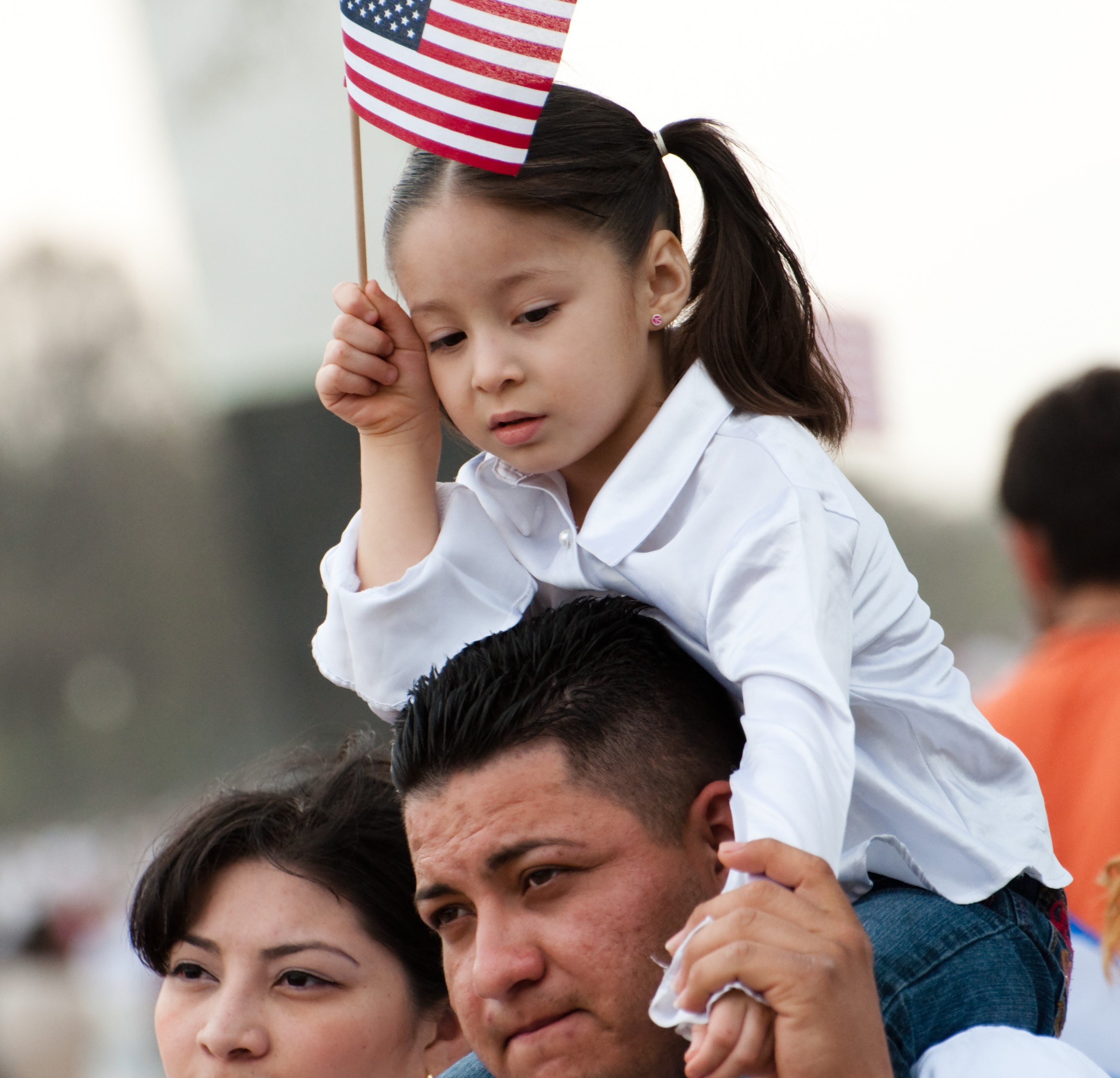 Even before the coronavirus pandemic, public health experts sought to better protect immigrant health.
Even before the coronavirus pandemic, public health experts sought to better protect immigrant health.
In 2019, scientists from the Society of Behavioral Health urged Congress to impose strict restrictions on Immigration and Customs Enforcement (ICE) intervention in or around medical facilities.
“Protecting the health of immigrants promotes health equity and is an important investment in protecting the health of the American public including schools, families, communities, and workforce,” according to the scientists. “Clinicians and health care professionals are central to achieving the healthiest America possible. Reaching immigrants in a medical environment that is safe for both health care professionals and immigrants is a key component in providing appropriate medical care and protecting public health.”
Now that the virus is here, we need to “address the gaps in federal COVID-19 legislation that exclude immigrant households from recovery assistance benefits (Recovery Rebates, Unemployment Insurance, etc.),” according to Children’s Healthwatch.
The NAACP urges more action.
They advocate to:
- Establish sanctuary municipalities and states.
- Repeal of the travel ban.
- Repeal of the restrictions on provision of healthcare to immigrants.
- Improve conditions at the border in accordance with stringent public health standards.
Mijente also calls for a moratorium on deportations and ICE surveillance.
UnidosUS adds this:
“Neighborhood raids, along with the Trump administration’s ‘public charge’ rule that imposes a wealth test on all legal immigrants by discouraging them from seeking medical care they are eligible to receive, are counterproductive and will result in fewer people seeking testing and care, making mitigation efforts less effective. Compassionate and commonsense immigration policies are necessary for the Latino community’s success during this crisis.”
9. Count Latinos in the 2020 Census
How important is the 2020 Census?
Well, the results will determine political power, representation in Congress, and funding for schools, hospitals, roads, and social services in your community for the next 10 years.
The Census has officially started.
However, the Census Bureau has extended the deadline for data collection from Aug. 15 to Oct. 31, 2020. Field offices could reopen after June 1.
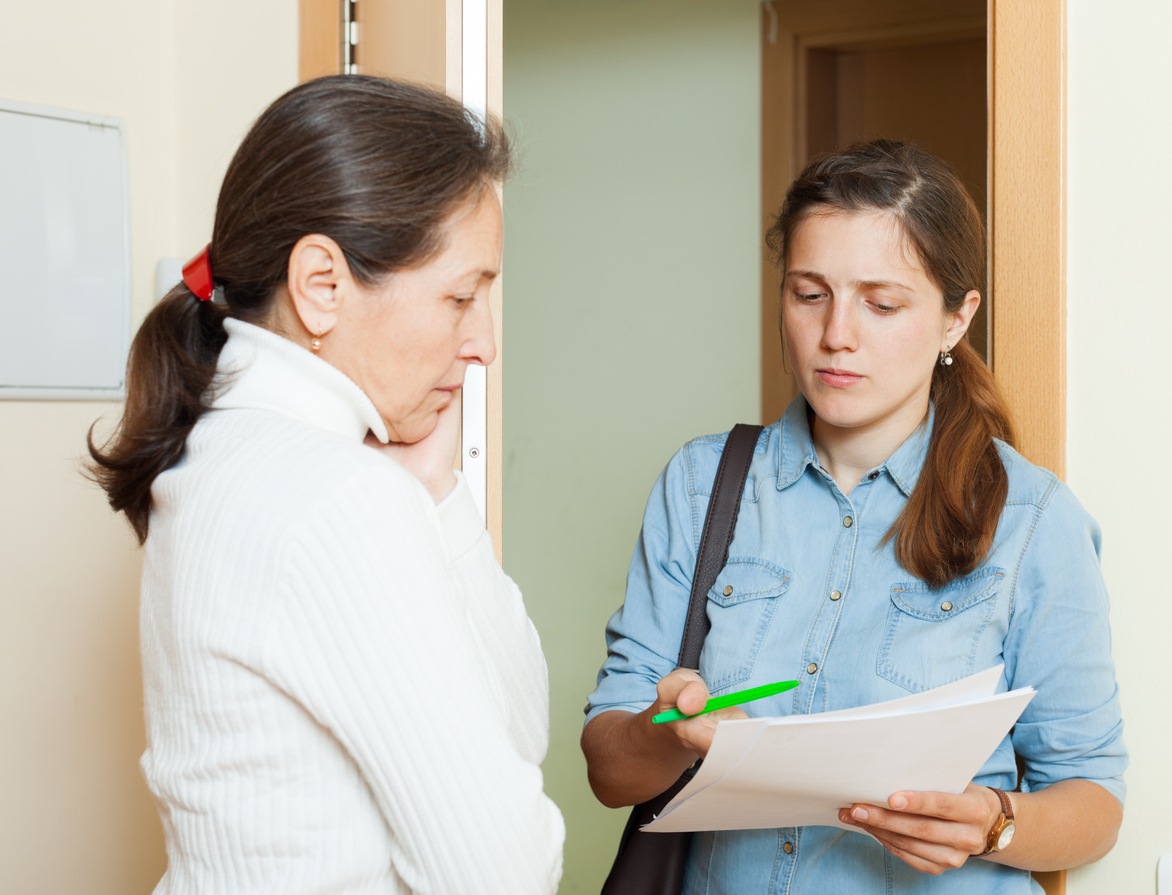 Latinos have historically been under-counted in the Census.
Latinos have historically been under-counted in the Census.
For example, in 2010, the net undercount rate for young Latinos was 7.1%, compared to 4.3% for non-Latinos. More than 400,000 Latino children under age four were left uncounted in the 2010 Census.
We need more campaigns, like ¡Hágase Contar!
And we need more groups to find unique ways to reach Latinos.
“In Pennsylvania’s Lehigh Valley, a campaign is targeting Hispanic households that are traditionally hard to count by inserting Spanish-language ads in Facebook videos that are reached via Spanish internet addresses,” according to Michael Wines with the New York Times.
Those without Internet can call 844-330-2020 for English and 844-468-2020 for Spanish. The National Association of Latino Appointed and Elected Officials, or NALEO, also has a hotline, 877-352-3676, to answer census questions.
10. Address Poverty and Income Inequity
Among Latino children, poverty rates are high (22% vs. 8% white children).
Children in poverty often lack quality education and healthcare, while also suffering childhood trauma and poor health outcomes.
That’s not to mention costs associated with poverty.
These costs—lost worker productivity, increased crime rates, and increased costs in health care—may amount to nearly $1.1 trillion annually. That is 5.4% of gross domestic product.
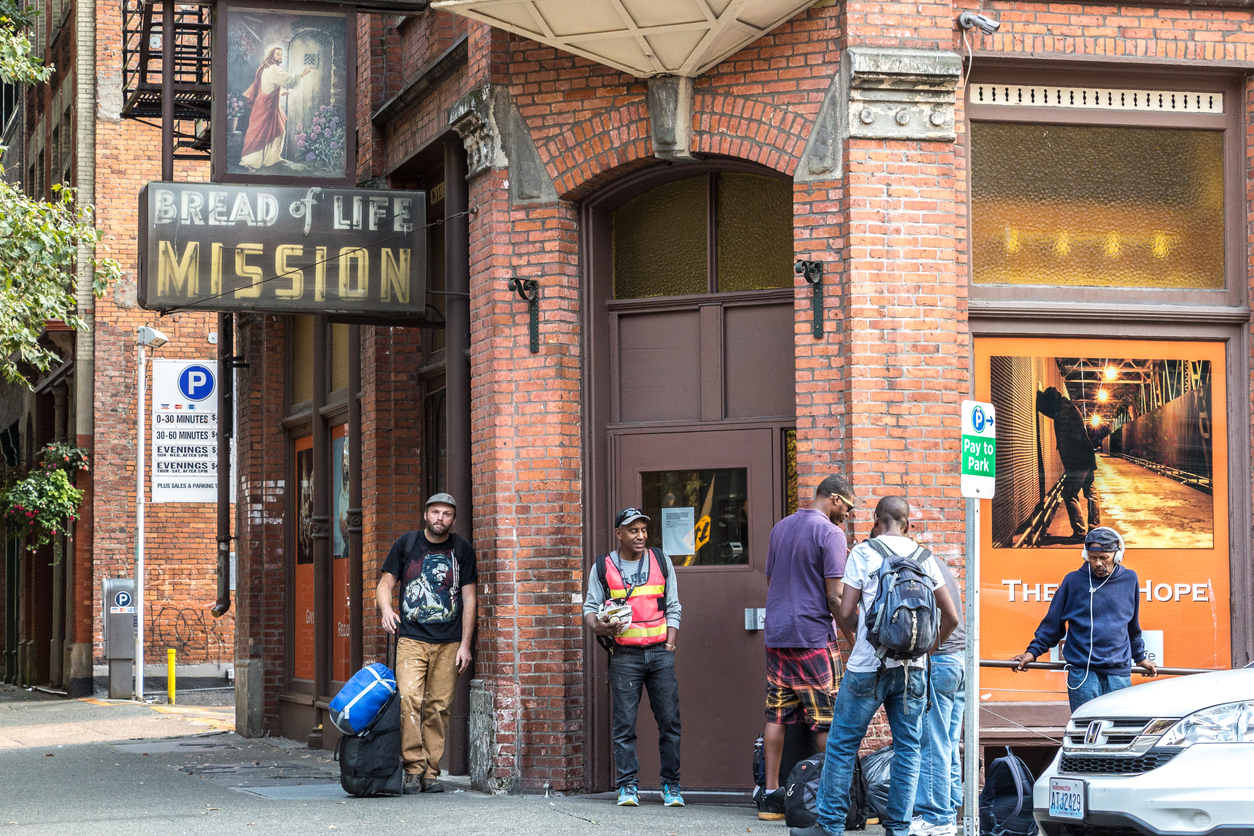 So the National Academy of Sciences, Engineering, and Medicine (NASEM) produced a 2019 report on 10 big policy areas that could cut the child poverty rate by up to 50%. This could also increase employment and earnings among adults in low-income families.
So the National Academy of Sciences, Engineering, and Medicine (NASEM) produced a 2019 report on 10 big policy areas that could cut the child poverty rate by up to 50%. This could also increase employment and earnings among adults in low-income families.
Their recommendations appear prescient through the lens of the coronavirus:
- Expand the Earned Income Tax Credit (EITC)
- Expand Child Care Subsidies
- Raise the Federal Minimum Wage
- Implement the ‘WorkAdvance’ National Training/Employment Program
- Expand SNAP
- Grow the Housing Vouchers Program
- Expand the Supplemental Security Income (SSI) Program
- Create a Universal Child Allowance
- Create a Child Support Assurance Program
- Increase Immigrants’ Access to Safety Net Programs
“Of the four strategies tested in simulations, a universal supports and work package approach appeared to have the greatest potential to reduce both poverty and deep poverty by half,” according to the report. “This approach would include expansion of the EITC and CDCTC, an increase in the minimum wage, increased eligibility for immigrants to safety net programs and a new child support assurance program. It also would increase employment by 600,000 and earnings by $13.4 billion.
Reducing income inequity is perhaps the “single-most important” structural change to help the U.S. economy to return to a sustainable growth path, according to the Levy Institute.
“Had these issues been addressed already, the pandemic’s impacts on the United States would have been less severe,” they wrote. “Maybe this time we can at least learn from our mistakes.”
11. Increase Equity in Voting Opportunity
Latinos are a rising population. They could wield great political power.
But the COVID-19 pandemic has many people rightly worried about going out to vote in primary elections, VotoLatino says.
“We can’t let this situation silence our voices — if anything, this crisis magnifies the need for accountable leadership that is responsive to the needs of our communities.”
 Here is how VotoLatino suggest you can vote and stay healthy:
Here is how VotoLatino suggest you can vote and stay healthy:
Vote by mail (absentee voting). “All states offer some form of voting by mail. Many states with upcoming primaries are expanding their vote-by-mail options or automatically mailing all registered voters an absentee ballot during the pandemic. For other states, you may need to request you absentee ballot.” Request your absentee ballot.
If you can’t vote by mail, try to vote early. “Early voting allows you cast your vote in person when there are fewer crowds and lines. Many states have some period of early voting (sometimes called in-person absentee voting).” Check if/when your state offers early voting.
If you vote on election day, follow COVID-19 hygienic procedures. “Try to vote at a time of day when your precinct is less likely to be crowded. This is often early morning or mid-afternoon. Maintain a six-foot distance from other voters and pollworkers, including if you’re waiting in line to vote. Wash your hands for 20 seconds before and after voting.”
UnidosUS is pushing Latinos to vote via its ¡Adelante! campaign.
“Electoral officials should redouble their vote-by-mail efforts now,” according to UnidosUS.
12. Maintain Focus on Education
70% of Latino teens fear falling behind in homework amid coronavirus.
62% of Latino teens fear lagging in activities like band and sports.
Latino teens are more worried than their peers that they won’t be able to keep up with school work or extracurricular activities while schools are shut down, says a recent survey by Common Sense and SurveyMonkey.
 The problem, experts say, is no Internet access.
The problem, experts say, is no Internet access.
Broadband access is especially critical for Latinos. About 23% of Latino children live in homes with no high-speed Internet. This is a higher percentage than their white (10%) and Asian (5%) peers, according to Pew Research Center.
UnidosUS has some recommendations:
- Sustain early learning programs, like Head Start and its employees.
- Congress should ensure quality online-distance education. “This is particularly critical for those students learning English who already experience wide opportunity gaps in comparison to their peers and for whom quality digital curricula are less available.”
- Provide timely, bilingual information about children’s to parents.
“Congress should immediately pass new legislation or use existing authority to provide zero-interest forbearance to student loan borrowers,” they wrote.
13. Shift the Narrative: “The Virus is the Enemy, Not the Person Who is Infected.”
The NAACP warns of rising bias against minority populations amid the pandemic.
They suggest advocating for racial and social justice.
“We are all in this together!” they write. “We are stronger together. Only through collective, global cooperation can we contain this outbreak.”
Policy change is needed to counteract inequities due to unjust enforcement (or lack of enforcement) of social distancing measures and other public health laws during the COVID-19 pandemic, according to ChangeLab Solutions:
- Issue guidance documents that clarify enforcement strategies and reduce the use of criminal penalties for stay-at-home orders.
- Minimize incarceration and reduce risk of COVID-19 exposure in detention facilities.
- Reduce court fees and fines.
- Reduce risk of COVID-19 exposure among people with no permanent housing.
- Shift enforcement activities toward businesses and institutions.
- Use innovative strategies to maintain enforcement of laws designed to protect people’s health.
It may not seem so, but addressing our biases toward minorities is possible, too.
To start, take a quick test to see if you have any implicit biases.
Seek training or help put an end to microaggressions. In the healthcare field, teach cultural competencies and cultivate more doctors of color to help produce better outcomes for Latino patients.

Check out stories of people who are overcoming biases:
- Dr. Rogelio Saenz overcome implicit bias growing up and in his career. He became a well-respected UT San Antonio researcher using data and demographics to set up social justice solutions.
- Dr. Jabraan Pasha created a training workshop to spread awareness of implicit bias in healthcare.
- Kelly Capatosto and the Kirwan Institute are doing significant research and training on implicit bias.
Take the Implicit Association Test now!
14. Dismantle the Five Ugly Drivers of Health Inequity
Recently, we shared a ChangeLab Solutions report, A Blueprint for Changemakers: Achieving Health Equity Through Law & Policy.
The Blueprint aims to help communities advance a local agenda for health equity.
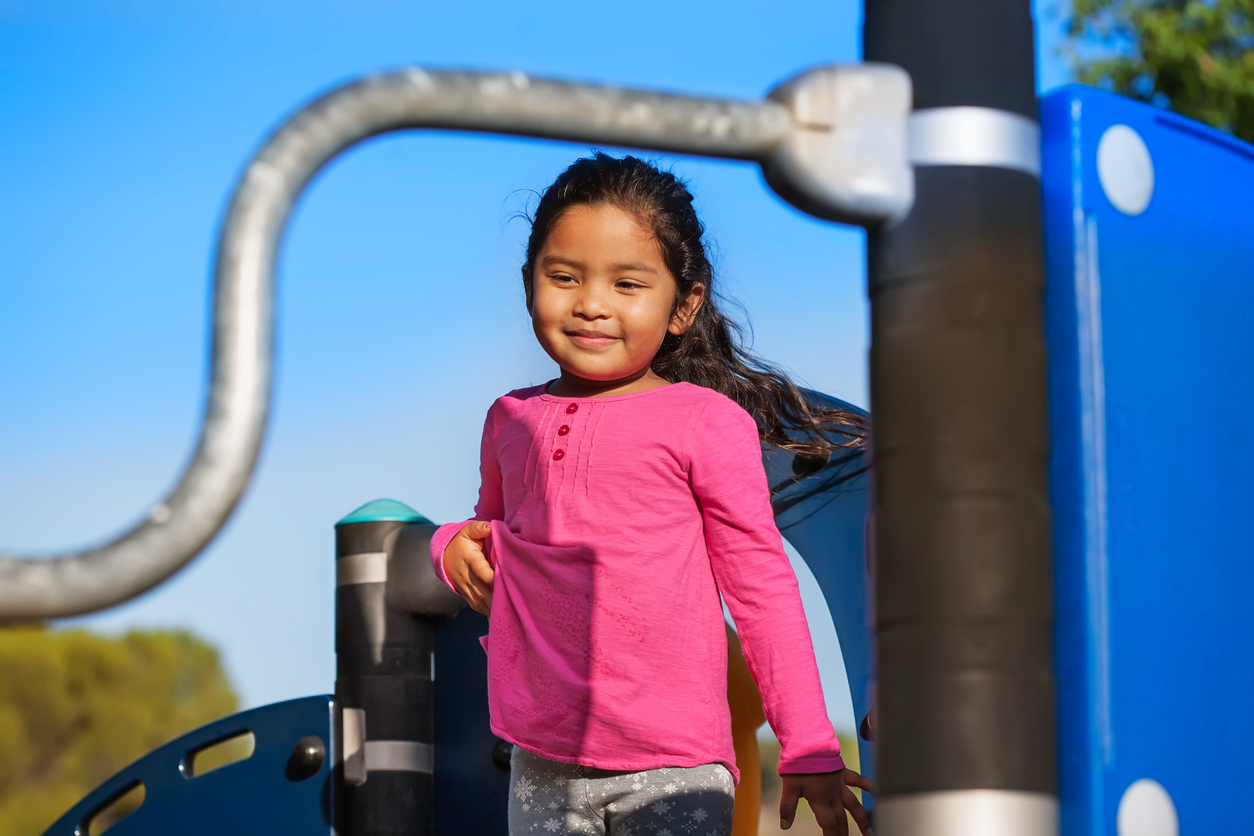 It focused on five underlying realities behind health inequity:
It focused on five underlying realities behind health inequity:
- Reduce Structural Discrimination
- Address Poverty and Disparities in Income and Wealth Accumulation
- Reduce Disparities in Opportunity
- Address Disparities in Power
- Leverage Governance to Promote Health Equity
“Strive for effective, responsive, and sustainable action by revising policies, protocols, and practices in ways that both respond to immediate community needs and use resources efficiently so that investments and assets are maintained for future generations,” according to the report.
15. Involve Planners in Unlocking Health Equity
Local planners have the power to help create healthy, fair communities.
Unfortunately, common planning practices have contributed to the high percentage of poor people and people of color who live in unhealthy places, widening disparities in health and wealth.

That’s why our friends at ChangeLab Solutions created Long Range-Planning for Health, Equity & Prosperity: A Primer for Local Governments.
This can help planners prioritize health and equity in their work, even amid coronavirus.
“By integrating health and equity considerations into planning practices, planners have the power to revise past planning decisions and create healthy, equitable, and prosperous communities,” ChangeLab reports.
16. Advance Health Equity in Public Transportation
Just weeks before the coronavirus locked down the United States, our own Amanda Merck showcased how to advance equity in public transportation.
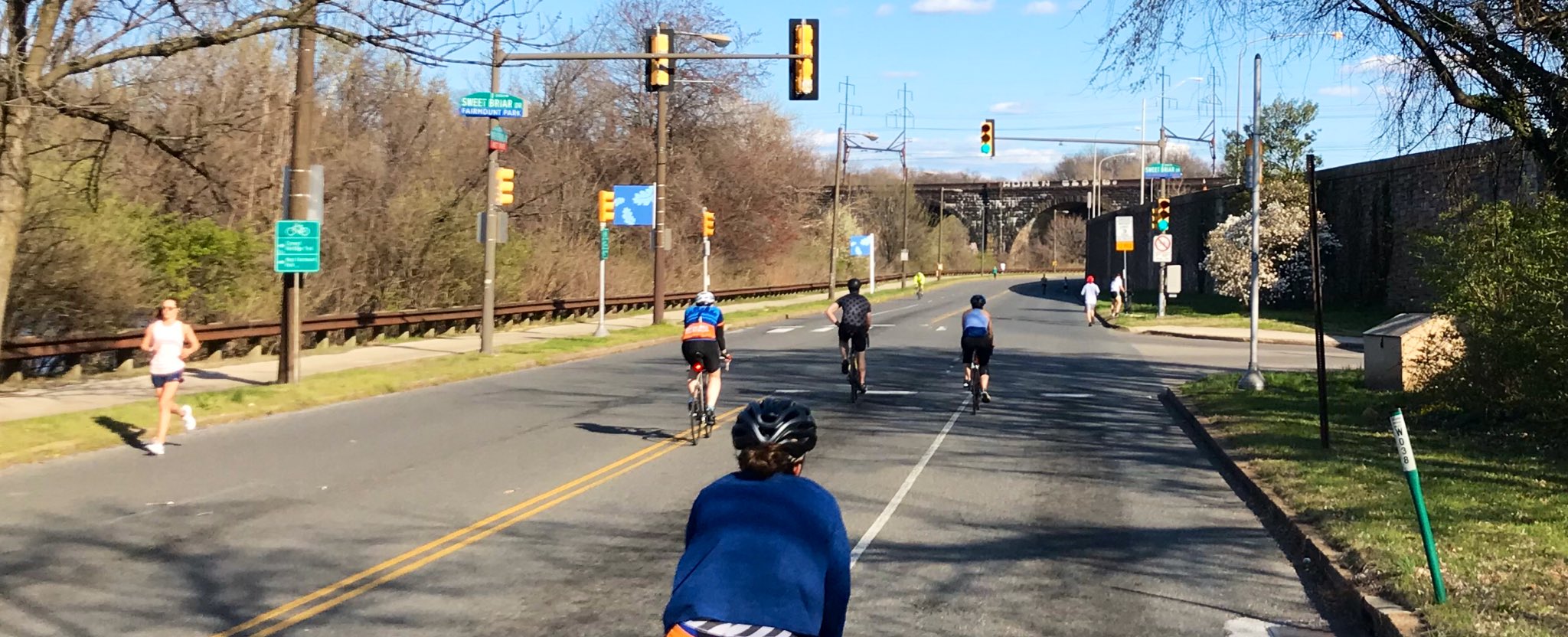 These actions are also important for when cities reopen.
These actions are also important for when cities reopen.
- Improve public knowledge about transportation decision-making.
- Allocate transportation funding and resources equitably.
- Improve the quality and diversity of transportation leadership.
- Prioritize historically underrepresented communities in transportation decision-making.
- Work in unison to provide people-focused infrastructure.
“Improving or investing in communities—even in beneficial ways—such as improving a transit system, adding bike lanes, or investing in better pedestrian connections, often makes it more attractive to live there, which increases the market value of those neighborhoods, especially if these amenities are denied in other areas of the region,” according to a report by Smart Growth America.
17. Create a National Task Force on Coronavirus and Health Equity and Health Disparities
Latinos are bearing a large burden of coronavirus cases and deaths.
But there is still a need to further identify disparities with accurate reporting of COVID-19 socioeconomic, racial, and ethnic demographic data.
More than that, though, we need leaders.
Public health leaders should start a national health disparities task force, said Sophia L.Thomas of the American Association of Nurse Practitioners.
“[The] short-term objective of this effort should be to improve COVID-19 outcomes among impacted minority groups,” Thomas wrote.
This group could also help protect Latinos and other vulnerable groups.
“There needs to be an effort to map and design specific policies to protect highly vulnerable groups such as undocumented immigrants, the homeless population, inmates, victims of domestic violence, and the nursing home population, to cite only a few,” according to the Pandemic of Inequality by the Levy Institute. “Each of these groups requires a taskforce of its own to design appropriate policies.”
18. Understand We Have the Ability to Get Involved to Improve for Health Equity
You don’t need to hold political office to push for health equity.
In fact, parents and residents can help leaders make change by getting involved in neighborhood associations and local committees, boards, and commissions. These groups rely on your input to shape plans and policies that impact health in your area.
Find out how to get involved locally.
“City boards and commissions are … how our community navigates the daily and weekly decisions that make El Paso run smoothly and to become the kind of community we all want,” according to the City of El Paso.
Update 5/28/20: The Robert Wood Johnson Foundation issued five key health equity principles for local and state leaders in responding to, reopening and recovering from COVID-19.
- Collect, analyze, and report disaggregated data.
- Include those who are most affected in decisions, and benchmark progress.
- Establish and empower teams dedicated to racial equity.
- Proactively fill policy gaps while advocating for more federal support.
- Invest in public health, health care and social infrastructure.
“These principles can guide our nation toward an equitable response and recovery and help sow the seeds of long-term, transformative change,” according to RWJF. “States and cities have begun imagining and, in some cases, advancing toward this vision, putting a down payment on a fair and just future in which health equity is a reality. Returning to the ways things were is not an option.”
19. Understand We Can Use Our Voices to Speak Up for Health Equity Changes
Here are some digital ways to step up for health equity:
- You can take action for health equity with our Salud America! campaigns, action packs, and Health Equity Report Cards on the health of your town!
- You can learn from our Salud Heroes, real champions of change who drive policies and environments for health equity.
“Community leaders can adopt dynamic land-use methods, public-private partnerships, and community involvement to build and revitalize Latino neighborhoods,” according to a Salud America! research review. “This can create affordable housing, connection to public transportation, and more green spaces.”
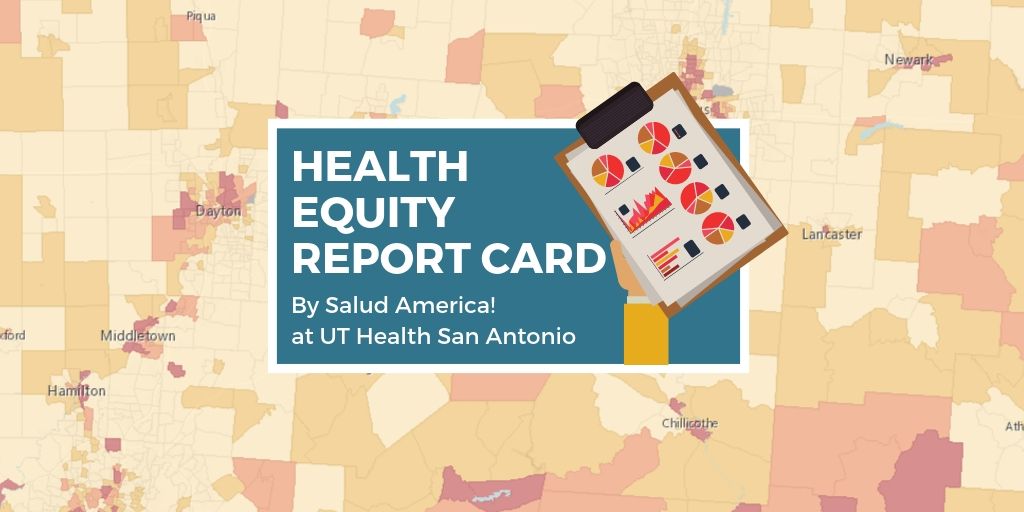 Here are some additional opportunities for advocacy:
Here are some additional opportunities for advocacy:
- Download the Salud America! “Handle With Care Action Pack” to start a Handle With Care program. In the program, police notify schools when they encounter children at a traumatic scene, so schools can provide support.
- Download the Salud America! “Trauma Sensitive School Action Pack” to help school personnel talk to decision-makers, build a support team, craft a system to identify and support traumatized students, and more.
- Sign a petition for Open Streets by the Rails to Trails Conservancy to urge local leaders to close select streets to car traffic, and open them for human activity during this global pandemic.
- Select your county name and get a customized Salud America! Health Equity Report Card to see how your area stacks up in housing, transit, poverty, health care, healthy food, and other health equity issues compared to the rest of your state and nation.
- Register for our webinar on how to use the Salud America! Health Equity Report Card on May 7, 2020.
“True recovery will require a longer timeline if no fundamental and permanent changes are made to the current criminal justice, immigration, and economic systems,” according to a report by Mijente.
“If this country continues to choose corporations and the extremely wealthy over the well-being of its people, of which Latino people make up 20%, we will be doomed to repeat the systematic failures that led us to the depths of this public health crisis.”
By The Numbers
23.7
percent
of Latino children are living in poverty




